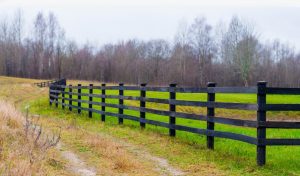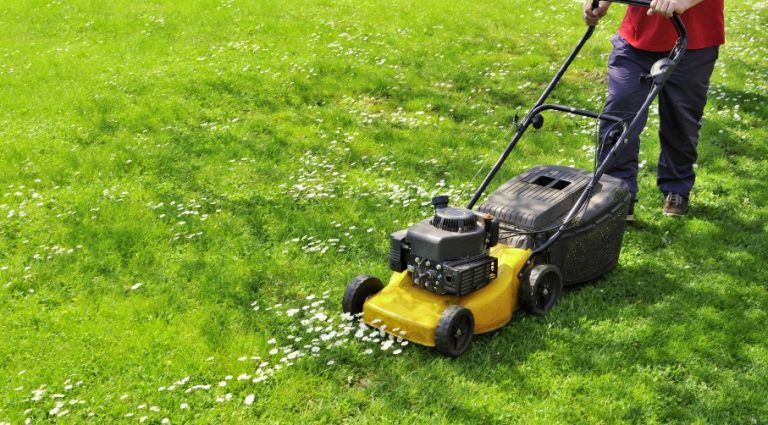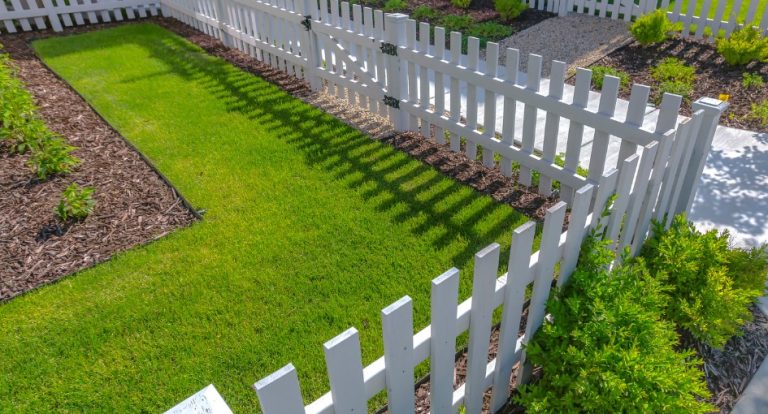Owning property in the UK comes with various responsibilities, especially when it comes to understanding legal boundaries and resolving potential disputes with neighbours. One of the key concepts that property owners should be familiar with is the 7 year boundary rule, a principle that can play a significant role in boundary disputes.
Misunderstandings over property lines, fences, and hedges can escalate into legal conflicts, but knowing your rights and responsibilities helps prevent such issues.
This blog aims to break down what is the 7 year boundary rule UK, explain its implications in the context of adverse possession, and provide key facts you need to know to protect your property rights. Whether you’re a homeowner, a landlord, or involved in a dispute, this information will equip you with the knowledge to navigate these tricky situations.
What is the 7 Year Boundary Rule in the UK?

The 7 year boundary rule is part of a broader legal concept involving adverse possession. In essence, adverse possession is a process by which someone can claim legal ownership of land they’ve used or occupied without the owner’s permission for a certain amount of time.
While most people associate adverse possession with squatting on abandoned land, it also applies to less overt situations like boundary disputes, where a neighbour might have encroached on your land unknowingly or even with your passive acceptance.
In the UK, adverse possession is typically associated with periods of 10 or 12 years of continuous use. The 7 year boundary rule refers to a time frame within which a property owner needs to act if they notice an encroachment or a boundary issue.
If no formal dispute or action is taken to address the situation within this 7-year window, it becomes much harder to contest the boundary at a later stage. This rule essentially acts as a warning – after 7 years of continuous, unchallenged use, reclaiming the disputed land could become legally difficult.
To summarise, the 7 year boundary rule is not a law in itself, but it is a practical threshold that informs property owners of the risks of leaving boundary issues unresolved for extended periods.
How the 7 Year Rule Affects Boundary Disputes?
When it comes to boundary disputes, the 7 year rule plays a significant role. These disputes usually arise when neighbouring property owners cannot agree on where the boundary between their properties lies.
This can happen for several reasons – a fence might be moved over time, a hedge might grow in such a way that it becomes unclear where the actual boundary line is, or a neighbour might build a structure that encroaches onto your land.
If a property owner allows this encroachment to continue without formally challenging it for a period of seven years, the law may treat this as tacit consent. In simple terms, if you’ve allowed your neighbour to treat your land as theirs for an extended period, the courts may be less likely to side with you if you later decide to contest it.
This is particularly important in cases where adverse possession is being claimed, as it strengthens the neighbour’s position.
Take, for example, a situation where a neighbour erects a shed that slightly crosses over into your land. If you do nothing to address this and allow it to remain for 7 years or more, your legal options for removing the structure may become limited. Courts may interpret your inaction as acceptance of the new boundary.
Therefore, it’s crucial for property owners to remain vigilant and address any discrepancies early on. Even if you’re not ready to take legal action immediately, a simple letter or communication with your neighbour indicating that you do not accept their use of the disputed land could help preserve your rights.
Adverse Possession and Property Boundaries

The concept of adverse possession underpins the 7 year boundary rule. Adverse possession allows someone to claim legal ownership of land that they’ve occupied continuously for a certain period, without the permission of the legal owner. It can apply to unregistered and registered land, but the requirements differ slightly:
- Unregistered Land: For unregistered land, a claimant can apply for ownership if they have occupied it for 12 years without the legal owner’s consent.
- Registered Land: For registered land, the period of occupation is 10 years under the Land Registration Act 2002. However, the process is more complex because the legal owner has a chance to oppose the claim.
In either case, the occupier must demonstrate that they have used the land continuously, without interruption from the legal owner. Moreover, the use must be open and obvious, meaning the legal owner must have had a reasonable chance to notice the occupation and take action. If no action is taken within the specified period, the occupier can potentially gain legal ownership through adverse possession.
For boundary disputes, adverse possession can come into play when a neighbour encroaches on a property. If the encroachment goes unchallenged for 7 years, it signals a potential shift in legal advantage towards the encroaching party. After the full period of adverse possession (10 or 12 years) has passed, the occupier can apply to officially take ownership of the disputed land.
However, adverse possession claims can be difficult to establish and require solid evidence. This includes demonstrating exclusive control over the land and proving that the legal owner had knowledge of the occupation but did nothing to challenge it.
When Will the 7 Year Boundary Rule Be Used?

The 7 year boundary rule can be used in specific situations involving boundary disputes and claims of adverse possession. Below are the key scenarios where the 7 year boundary rule might apply:
1. Unresolved Boundary Disputes with Neighbours
The 7 year boundary rule is particularly relevant in cases where neighbouring property owners are involved in a boundary dispute. This could occur if:
- One neighbour has gradually extended their property, such as moving a fence or building a structure (like a shed) that encroaches onto your land.
- If the rightful landowner does not formally challenge the encroachment within 7 years, it may become much harder to dispute the boundary later on.
In such cases, if no legal action or formal challenge is made within 7 years, the encroaching neighbour may strengthen their case for adverse possession, particularly if the encroachment continues beyond 7 years and into the 10-12 year timeframe required for a successful adverse possession claim.
2. Cases of Adverse Possession (Squatting Rights)
The 7 year boundary rule is often a precursor to an adverse possession claim. Adverse possession is a legal principle that allows someone to claim ownership of land if they have occupied it continuously and without permission for a specific period. The 7 year rule is relevant in this context because it signals when:
- A property owner has allowed their neighbour or another party to use part of their land without objection for 7 years.
- After this period, the encroaching party may have an increased chance of success in claiming the land under adverse possession if they can prove they have met all the necessary legal conditions (such as continuous, exclusive, and open occupation).
The 7 year boundary rule indicates that if no action is taken within this timeframe, the rightful owner’s legal recourse becomes more limited, and they risk losing ownership under adverse possession claims after the full required period (10-12 years).
3. Ignoring or Delaying Action on Encroachments
The 7 year rule serves as an important indicator that property owners should not delay in addressing boundary encroachments. For example:
- If you notice that your neighbour has moved a boundary marker (such as a fence, wall, or hedge) onto your property but do nothing about it for 7 years, this inaction can be seen as implied consent.
- If you fail to address or contest the encroachment within this period, it may be harder to reclaim the land or restore the original boundary in the future.
The rule emphasises the importance of timely action in addressing any changes to property boundaries to avoid later complications.
4. Lack of Clear Boundary Definition
In situations where the boundary between properties is unclear or has become disputed due to vague property titles or unclear land registry maps, the 7 year boundary rule comes into play when:
- A property owner has been occupying land (intentionally or unintentionally) that may actually belong to a neighbouring property.
- If no dispute or challenge is raised within 7 years, the legal owner of the land could lose the right to reclaim it, as the occupying neighbour might later claim adverse possession.
5. Negotiating Boundary Agreements
Sometimes, neighbours come to informal agreements over boundaries, such as where to place a new fence or maintain hedges. If these agreements are not properly documented, the 7 year rule could later be used by one party to assert a claim on the land. For example:
- If an informal agreement allows a neighbour to use part of your land and this situation continues for more than 7 years without being formally contested or agreed upon in writing, the neighbour may later have grounds to claim ownership through adverse possession.
- In these cases, the 7 year rule acts as a caution to document all boundary agreements formally and legally to avoid future claims.
When to Use the 7 Year Rule in Your Favour?
As a property owner, you can use the 7 year rule to protect your boundary rights or to claim land if you have been using it continuously. Here are scenarios where it may work in your favour:
- Defending Your Property: If you notice a neighbour using or encroaching on your land, addressing the issue within 7 years can prevent them from later claiming adverse possession. You can send a letter, seek mediation, or even take legal action to ensure that your property boundary is respected.
- Claiming Land: If you have been using part of your neighbour’s land for over 7 years without them challenging you, you might consider using the 7 year rule to prepare for an adverse possession claim. However, this will still require fulfilling all legal conditions for adverse possession.
In all cases, seeking legal advice from a property solicitor is crucial to ensure that the 7 year boundary rule and adverse possession laws are applied correctly in your specific case.
How to Resolving Boundary Disputes Using the 7 Year Rule?

If you find yourself in a boundary dispute, the 7 year rule may be a critical factor in determining how the dispute is resolved. Property boundary disputes can be contentious, often leading to strained relationships between neighbours. However, addressing the issue early can help prevent legal complications down the road.
Here are the key steps involved in resolving a boundary dispute:
- Check Official Documentation: The first step is to consult Land Registry records. These records contain the official boundaries of your property as registered with the government. However, keep in mind that land registry maps are sometimes vague, and the exact boundary may not always be clear from these documents alone.
- Get a Professional Survey: If the boundary is unclear, a property surveyor can help. Surveyors use precise measurements and can help determine where the legal boundary lies. This is often crucial in disputes where fences, walls, or hedges may have shifted over time.
- Attempt Negotiation: In many cases, boundary disputes can be resolved through negotiation or mediation. It’s always a good idea to try to reach an agreement with your neighbour before taking legal action. Mediation is often quicker and less expensive than court, and it can help preserve a good relationship between neighbours.
- Seek Legal Advice: If negotiations fail and the boundary dispute persists, you may need to seek professional legal advice. A solicitor who specialises in property law can guide you through your options, including applying for adverse possession if applicable.
- Take Legal Action if Necessary: As a last resort, you can take the case to court. However, litigation can be expensive and time-consuming, so it’s generally best to explore other avenues first.
If a neighbour has occupied part of your land for more than 7 years, the courts may consider their claim under adverse possession more favourably. However, there are legal defences available, especially if the land registry documents support your boundary claim.
Protecting Your Property Rights in the UK
Protecting your property from future boundary disputes requires proactive management. Here are some practical tips for property owners in the UK:
- Regularly Inspect Your Boundaries: Walk the boundary lines of your property regularly to ensure there are no changes or encroachments. Early detection of potential issues can prevent long-term problems.
- Maintain Accurate Documentation: Keep up-to-date records of your property’s boundaries, especially if you’ve made any formal agreements with neighbours. You should also ensure that any alterations to boundaries are documented and, if necessary, updated with the Land Registry.
- Communicate with Your Neighbours: Good communication can prevent many boundary disputes from escalating. If you’re planning on making changes near the boundary, such as installing a new fence, it’s courteous to inform your neighbour beforehand to avoid misunderstandings.
- Address Disputes Early: If you notice any encroachment on your property, don’t ignore it. Even if you’re not ready to take formal action, make it clear to your neighbour that you’re aware of the issue and that you don’t accept their use of the land. This can prevent future problems.
Common Misunderstandings About the 7 Year Boundary Rule

There are several misconceptions about the 7 year boundary rule, and understanding the truth behind these myths can help property owners avoid costly mistakes.
- Myth 1: After 7 years, the encroaching party automatically owns the land
Many believe that once 7 years have passed, a neighbour automatically gains legal ownership of the land they’ve been using. This is not the case. While 7 years of unchallenged use can strengthen a claim, the occupier must still go through a legal process, including proving adverse possession in court. - Myth 2: The 7 year rule applies to all types of property disputes
The 7 year boundary rule applies mainly to boundary disputes related to adverse possession. Other types of disputes, such as disagreements over easements or rights of way, are governed by different legal principles. - Myth 3: Boundary disputes can’t be resolved once 7 years have passed
Even if 7 years have passed, property owners can still contest boundary disputes. However, the longer the issue goes unchallenged, the more difficult it becomes to prove your case. Acting quickly is always in your best interest.
Key Facts You Should Know About Boundary Disputes and UK Law
- The 7 year rule is linked to adverse possession, but it does not automatically grant ownership.
- Adverse possession requires 10-12 years of continuous, unchallenged occupation to claim land.
- Official land registry records and professional surveys are essential tools for resolving boundary disputes.
- Early action is crucial to prevent the loss of land in boundary disputes.
- Mediation and negotiation are often more effective than legal action in settling disputes.
Conclusion
The 7 year boundary rule is a critical factor in resolving boundary disputes in the UK. While it is not a law in itself, it highlights the importance of acting quickly when disputes arise.
By understanding the rule, knowing your rights, and taking proactive steps to protect your property, you can avoid the costly and stressful process of losing land through adverse possession. If you ever face a boundary issue, be sure to consult your land registry records, engage a professional surveyor, and seek legal advice when necessary to protect your rights.
FAQs About the 7 Year Boundary Rule and UK Boundary Laws
What qualifies as adverse possession under the 7 year rule?
Adverse possession typically requires 10-12 years of continuous, unchallenged occupation. The 7 year rule indicates a time frame within which boundary disputes should be addressed before it becomes harder to challenge adverse possession claims.
How can I claim ownership of a property boundary under the 7 year rule?
To claim ownership, you need to provide evidence of continuous, unchallenged use of the land for over 7 years. This could involve photographs, witness statements, or other documentation. An application for adverse possession will be required if you meet the necessary criteria.
What steps should I take if I’m involved in a boundary dispute with a neighbour?
First, consult your land registry records and get a professional survey to clarify the exact boundary. Then, try to negotiate with your neighbour or involve a mediator. If the issue cannot be resolved, you may need legal advice.
Do I need to hire a lawyer to resolve a boundary dispute?
In many cases, boundary disputes can be resolved without a lawyer, particularly through negotiation or mediation. However, if the dispute is complex or involves adverse possession claims, hiring a solicitor is highly recommended.
How does the Land Registry help resolve boundary disputes?
The Land Registry holds official records of property boundaries, which can be used to determine the legal boundaries in a dispute. However, these records are not always definitive, and additional evidence such as a professional survey may be required.
What evidence do I need to prove my boundary rights?
You’ll need documentation such as the property title plan, land registry documents, and any agreements made with neighbours. Photos, historical records, and witness statements can also support your claim.
Can I prevent adverse possession on my property?
Yes, by regularly inspecting your property boundaries, addressing any encroachments as soon as you notice them, and making it clear that you do not consent to any unauthorised use of your land.






